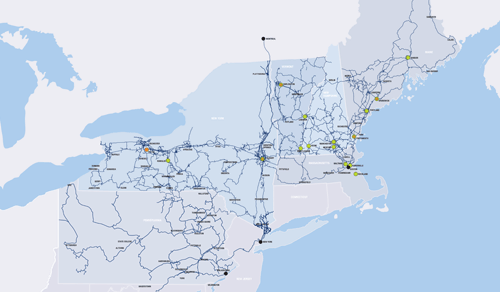According to statistics published in Forrester’s 2016 study, The State of Enterprise Risk Management 2016,only 40% of businesses have a contingency plan in place in case of an emergency or natural disaster. In other words, there is a 60% chance that your business has not taken preventative measures to protect your valuable business data against a natural disaster.
However, the likelihood that your business may be disrupted by a fire, flood, tornado,  earthquake, or hurricane is quite high. For perspective, here are some statistics compiled by researchers with the Insurance Information Institute on natural-disaster related business losses for the year 2016.
earthquake, or hurricane is quite high. For perspective, here are some statistics compiled by researchers with the Insurance Information Institute on natural-disaster related business losses for the year 2016.
- Natural disasters cost businesses in the U.S. $23.8 billion.
- Severe thunderstorms were responsible for 60% of insured losses, which totaled $14 billion.
- Floods, including flash floods, cost U.S. businesses $4.3 billion.
- Tropical cyclones were responsible for a loss of $3.5 billion.
- Winter storms and cold weather brought about a $1 billion loss.
- Heat-related events, including drought, wildfires, and heat waves, cost $1 billion.
The best way to reduce losses from a natural disaster is to restore operations as fast as possible. Every hour your business is non-operational adds to your losses. Keep in mind, businesses can take up to 3 months to recover from a natural disaster.
However, if your data is backed up at an off-site location, such as the cloud, you can easily restore operations in minutes instead of months.
How You Can Protect Your Data From a Natural Disaster
Off-Site Backups
Your business data is central to your operations. If your data is backed up in one or more off-site locations, you can quickly restore your systems and get your business back to normal. There are even backup and recovery options that can restore your whole IT infrastructure. With this option, you couldoperate from a secondary location until your primary location is restored.
Disaster Recovery Plan
In addition to off-site backups for your data and applications, you might consider implementing a disaster recovery plan. Organizations with well-developed and tested disaster recovery plans can restore operations more quickly than those that make no advance preparations.
When disaster strikes, your team members will be ready to mobilize and take the necessary steps to get your business up and running again. Businesses without Disaster Recovery (DR) plans may eventually restore operations, but the process takes longer, which adds to their financial losses.
Disaster Recovery Response Team
A disaster recovery response team is made up of key employees that have the knowledge and skills needed to respond to a natural disaster and restore IT services. All team members should have clearly-defined roles and responsibilities. The team will be responsible for invoking the disaster plan and following it to restore your company’s infrastructure, data, and applications.
Team members should take an active role in developing and testing a disaster recovery plan. You should test and evaluate your DR plan at the very least once a year (although quarterly is better) and whenever there is a significant change to your infrastructure.
Your IT Director or CIO should be responsible for the formation of your DR team and the development of your DR plan. If your organization lacks the in-house expertise, it would be worthwhile to retain a consultant or firm to ensure you have the right DR plan in place for your business.
If you store your crucial data in one or more off-site locations and develop a solid disaster recovery plan, you will be able to restore your business operations quickly and minimize your financial losses in the event of a natural disaster, such as a severe storm, flood, hurricane, or earthquake.
Are you ready to get serious about disaster recovery for your business? Contact a FirstLight disaster recovery specialist.




















